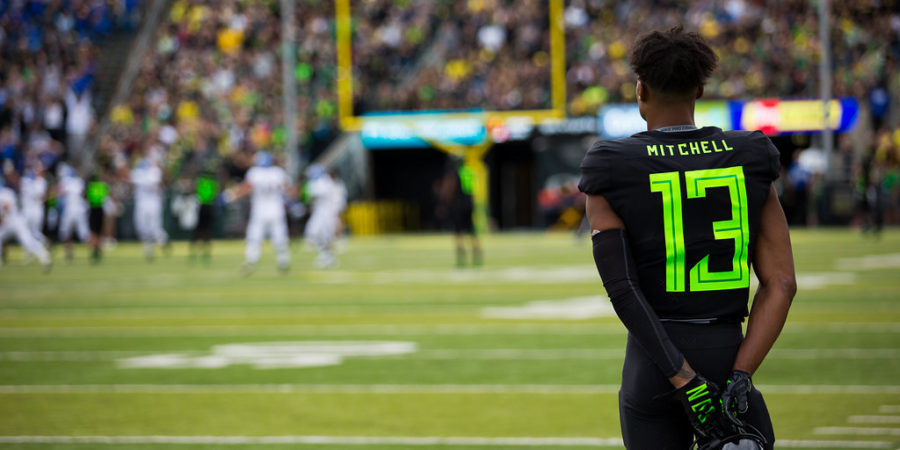Is it Saturday yet?!
The slow march to kickoff is nearly over, as we’re only a day away between now and when the no. 17 Ducks and no. 7 Huskies clash inside Autzen Stadium for the 111th time in the series’ storied history.
Given the nature of the rivalry, tensions entering Saturday’s game are already high, but add in the fact that the inside track to the Pac-12 North title is on the line and the stage is set for what could be one of the best games in the Pac-12 this season.
As we hurry up and wait for the arrival of the weekend, WFOD examines the keys to victory for Oregon over Washington.
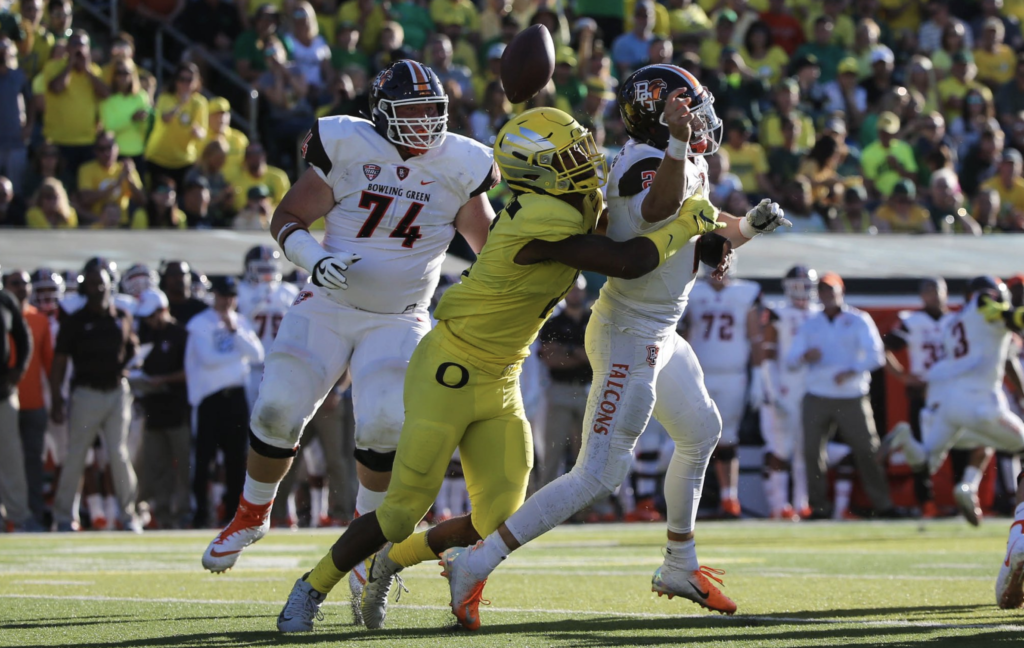
1. Pressure Jake Browning
Perhaps the biggest key to victory Saturday for Oregon will be its ability to bring pressure and force Washington quarterback Jake Browning to make hurried decisions. Like most quarterbacks, Browning is at his best when he’s afforded time to sit back and scan the field before delivering the ball, but with pressure in his face, Browning has shown a particular tendency to get flustered and make mistakes. To Washington’s credit, its offensive line has done a solid job keeping the pocket fairly clean for their senior signal-caller, though they have shown a vulnerability to pressure on passing downs.
In fact, according to advanced metrics, the Huskies have allowed a sack 8.1 percent of the time on passing downs, which ranks 75th nationally. With the Ducks possessing some of the best pass rushers in the conference in Jalen Jelks and Justin Hollins, Washington figures to have its hands full nullifying that threat. Looking at the same metrics but on the defensive side of the ball, Oregon has notched a sack 12.3 percent of the time on passing downs, which ranks 20th nationally. If the Ducks can generate enough consistent pressure to make Browning uncomfortable operating from the pocket, it will go a long way towards coming away with the victory.
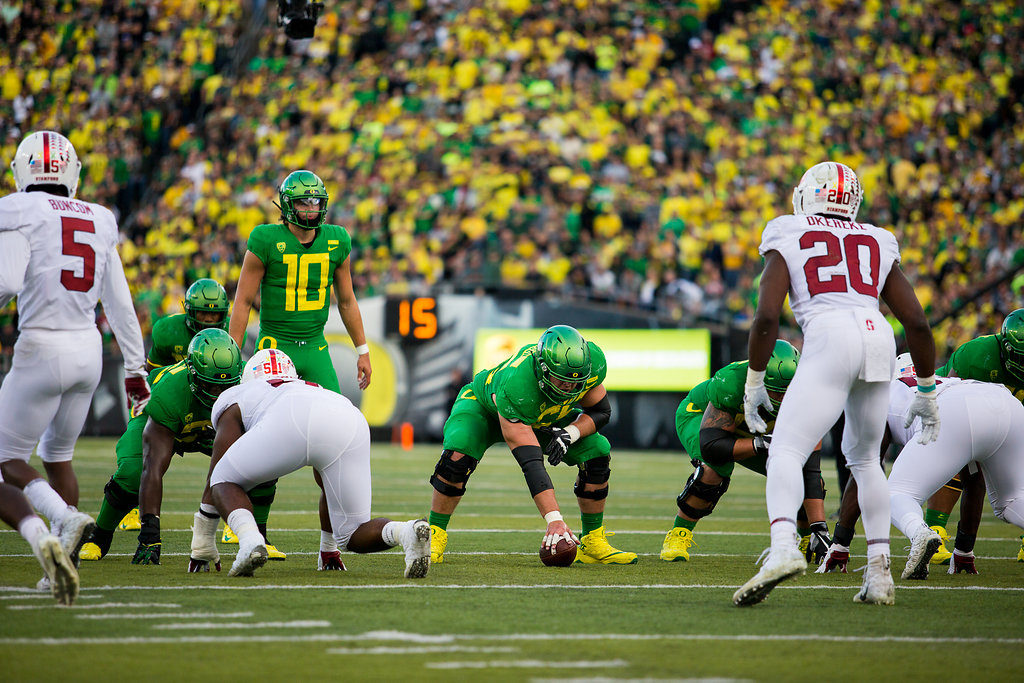
2. Give Justin Herbert a clean pocket to operate from
On the other side of the equation, Oregon’s ability to keep Justin Herbert clean will not only help their stud quarterback establish the kind of deadly rhythm we witnessed versus Stanford, but also put immense pressure on the talented Washington secondary to cover Oregon’s wide receivers for longer stretches of play. Aside from Dillon Mitchell, the Ducks haven’t really had a receiver find success getting consistent separation from defensive backs this season, but even a defensive backfield as skilled as Washington’s will have trouble holding up if a quarterback like Herbert is afforded time throw.
Fortunately for Oregon, the Huskies have yet to really prove that they can generate enough pressure to make life difficult for opposing quarterbacks. In fact, the eight sacks they’ve tallied as a group ranks tied for 97th nationally, while their sack rate on all passing plays ranks 116th out of 130 FBS teams. Conversely, Oregon’s offensive line has been one of the best pass protection groups in the entire country. The seven sacks they’ve allowed ranks tied for 27th nationally, while their sack rate on passing downs ranks fifth nationally at 1.7 percent. This is an advantage the Ducks must exploit on Saturday.
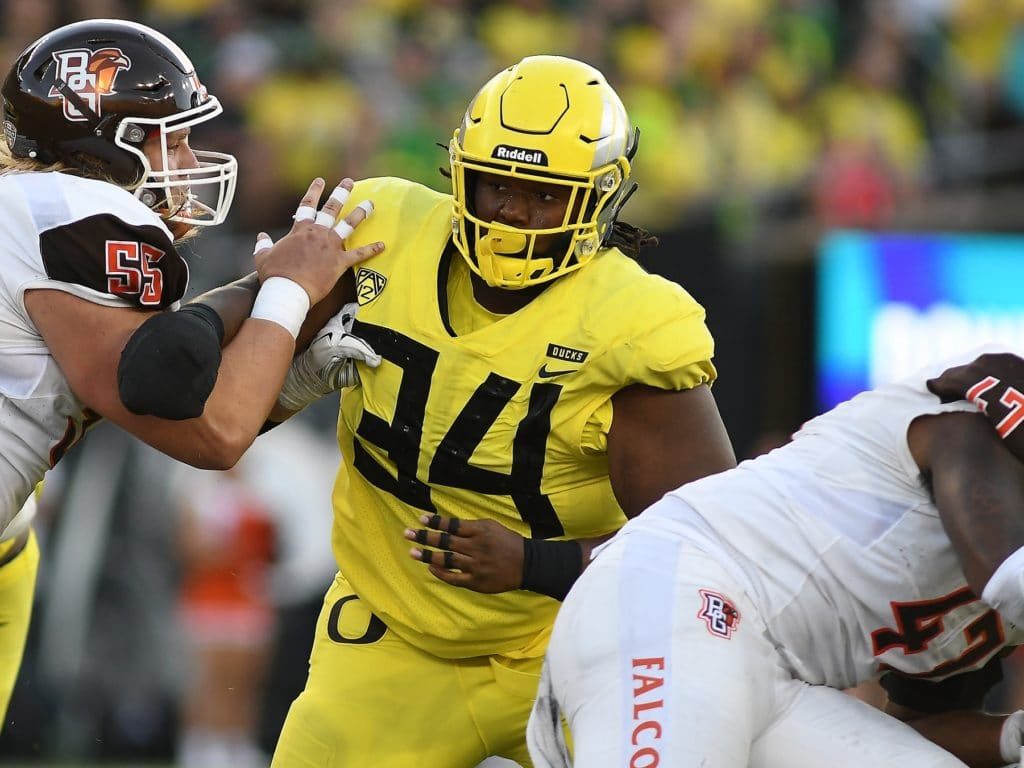
3. Take advantage on third down
Success on third down has typically been a harbinger for overall success in football, and that figures to be the case once again come Saturday. Through five games this season, the Ducks are proving to be one of the nation’s best teams on third down on both sides of the ball. Offensively, Oregon ranks fifth nationally in third down success rate (56%) while also being one of the most effective offenses in the country when it comes to putting themselves in position for success on third down, ranking 15th in average third down distance (6.5 yards per third down). Defensively, the Ducks’ third down success rate has been similarly impressive, as defensive coordinator Jim Leavitt’s group ranks 17th nationally in this category at 29.1 percent.
On offense, the Huskies have been comparable to the Ducks in this department, finding success on 53.6 percent of their third down opportunities, which ranks eighth nationally. It’s been a whole ‘nother story on defense, however. Despite their tremendous talent, Washington’s defense has allowed opponents to find success 46.2 percent of the time on third down while posting an average third down distance of 6.1 yards, which ranks 115th and 124th, respectively. The Husky defense has also found themselves on the wrong end of the spectrum when it comes to the percentage of plays opponents have been in third-and-long and third-and-short. In those respective categories, Washington ranks 128th (36.6%) and 112th (13.9%) nationally.
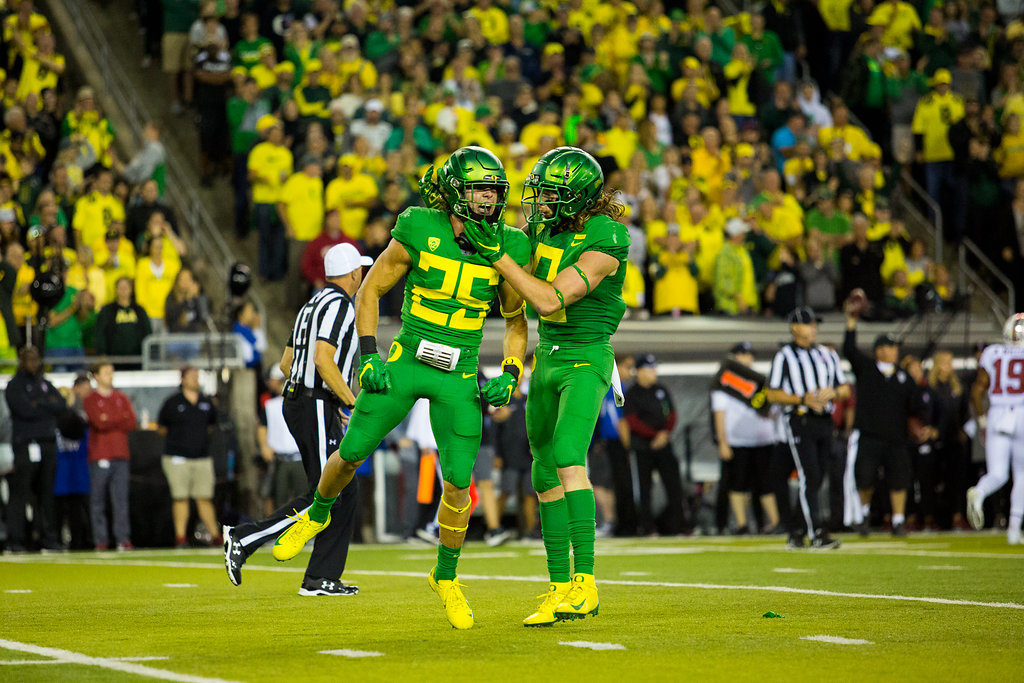
4. Find second half momentum
Through the first month and change of the college football season, there has been plenty to be excited about if you’re a Duck fan. Yet, if there’s one thing that allows doubt to creep into mind when projecting this team’s success moving forward, it has been Oregon’s notable lack of success in the second half of games. Dating back to the Ducks’ discouraging second half performance against San Jose State in Week 3, Oregon has averaged 11.7 points in the second half (excluding overtime), with the low mark (7) coming in the second half in their loss to Stanford. Meanwhile, the Ducks have struggled to keep opponents off the scoreboard, as they’ve been outscored by about touchdown on average on in the second half (18).
Fortunately for Oregon, Washington hasn’t fared much better generating second half points as they’ve averaged 11.5 in six games this season. However, they have excelled in limiting opponent scoring in the final two quarters of games, allowing just over seven points (7.2 points/second half). The friendly confines of Autzen Stadium should give the Ducks an advantage in the second half of this game, but only to a degree. It may sound simple, but if Oregon has any plans of pulling off the upset, they’ll need to put forth a well-rounded four-quarter performance.

